Guitarists: Need a Pick? Pack a Punch
by: Core77, 2011-05-19 14:00:00 UTC

We're digging the Pickmaster Plectrum Cutter, a simple metal punch that lets you turn any piece of sheet plastic, like your roommate's ATM card, into a guitar pick. (Yep, "plectrum" is the dictionary name of those little rounded triangles.)

(more...)


 Wi-Fi-Connected Lightbulbs, Coming To Smart Homes In 2012
Wi-Fi-Connected Lightbulbs, Coming To Smart Homes In 2012
by: fast company, 2011-05-19 22:55:16 UTC
Not only will these new bulbs save you money every month, they'll be tons of fun for amateur lighting designers, and can even increase home security.
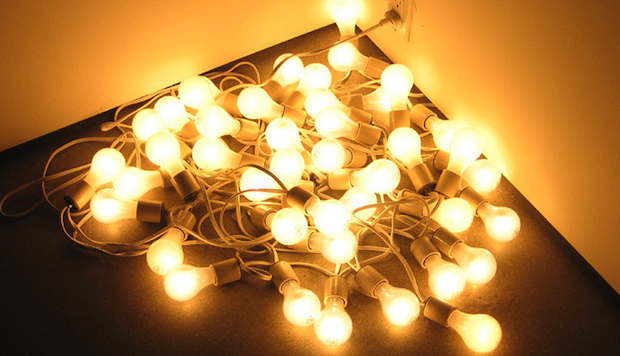
A Wi-Fi connected lightbulb that'll cost you just an extra buck a pop may sound crazy, but it's a soon-to-be reality that promises to transform your house into a mood-lit, low-power, eco-friendly smart home. That's the suggestion from NXP, a Netherlands-based semiconductor company that invented the Greenchip technology that will be in many Wi-Fi connected lightbulbs on sale by early 2012.
Why on Earth would you want a lightbulb with an IP address? It's not obvious until you realize we're not talking regular incandescent bulbs here. The tech will go into advanced compact fluorescent units as well as LED light bulbs, both clean low-power replacements for Edison's aging invention. These lights already incorporate a few chunks of silicon in their bases to help control them, and it's this tiny circuit board that enables all sorts of new things--adding NXP's tiny Wi-Fi system to the board is relatively easy and cheap. And then you can turn your lights on and off from a computer hooked up to your home's wireless grid.
We spoke to Jim Lindop, NXP's general manager of low power RF, and he
explained "one thing is to lower the energy consumption of the bulb, and
the other is to make them smart" and this smart-making really is the "next stage,
the evolution of lighting." Home automation has long been able to do
some of this sort of thing, but the advent of LED lighting in particular
(which can even include color variation lighting) and ubiquitous home
networking means it's now much simpler to do. "You can now connect
burglar alarm systems wirelessly to your lights...you can cycle your
lights so it looks like someone's around.
Amazing, no? You'll also be able to control mood lighting "states" with a remote control, or via your iPad, as if you were a theater lighting designer; you'll be able to quickly and easily incorporate movement sensing automated lighting, that could even turn on dimly if it detects you're stumbling to the bathroom at midnight; and you'll be able to download apps to hone and polish your home's lighting energy needs so that you end up with a smaller power bill.
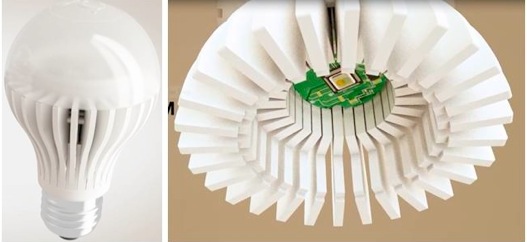
"It's part of the smart home" Lindop explains. NXP's tech actually enables the "Internet of Things," connecting literally everything to the Net. And lighting could be just the gateway to getting the average consumer excited about smart homes, which carefully manage how power is consumed to improve performance. By the end of the year, you may be able to buy a pack of "five light bulbs and a remote control" for just $50 from stores like Home Depot. Lindop says one of the breakthroughs of the new bulb and the apps that run it are that "it's simple to use, something I know my mother would've been able to use."
Greenchip uses 2.4 GHz Wi-Fi signals (over an 802.15.4 short range wireless protocol that won't compete with your normal home 802.11 g/n computer network). They use the new Ipv6 protocol too, so there's no worries that your lightbulbs will use up all the world's available Internet addresses. Plus, the JenNetIP system that NXP's built to let your computers talk to your lights is being open-sourced--in the hope that other manufacturers will embrace it. In fact, Google's already doing so, with its recently revealed Android Home automation system, something that Lindop notes validates the market.
Besides geekily playing with your home lights ("Did I leave the lights on? Let me log in and check!") the Net-enabled smartbulbs will shave precious dollars off the bill, every month for their years-long lifespans. And then when you've done that, you'll probably be tempted to hook up your refrigerator, your hot water heater, and so on...until you have a smart home on your hands.
Chat about this news with Kit Eaton on Twitter and Fast Company, too.


 Lightfair Briefing: Philips, Cree, Switch, Marvell
Lightfair Briefing: Philips, Cree, Switch, Marvell
by: Environmental Leader, 2011-05-19 14:45:10 UTC

Here’s a roundup of news from Lightfair International, the trade show and conference winding up today in Philadelphia. Philips has unveiled what it says is the world’s first LED replacement for the 75-watt light bulb. The Philips EnduraLED A21 (pictured) is a 17-watt model that cuts energy consumption by 80 percent compared to a traditional [...]
Intel’s Chemical Waste Rises 27% in One Year
by: Environmental Leader, 2011-05-19 20:19:46 UTC

Intel saw most of its economic metrics worsen in 2010 compared to 2009, with chemical waste output up 27 percent, according to the company’s 2010 CSR Report. Last year chemical waste generated was 31,265 tons, up from 24,665 tons in 2009 and the highest level in five years. The company has a target to reduce [...]
No Ordinary Water Purifier
by: Yanko Design, 2011-05-19 15:51:22 UTC
This isn’t your typical Brita or PUR water filter, this is an innovative reverse osmosis purifier, but it actually looks like a piece of art, not an appliance. The design is minimal and meant to be slightly organic – fluid like water. I LOVE the little spout. Hot, cold or room temperature – serve it up however you like.
Designer: Nicola Loi
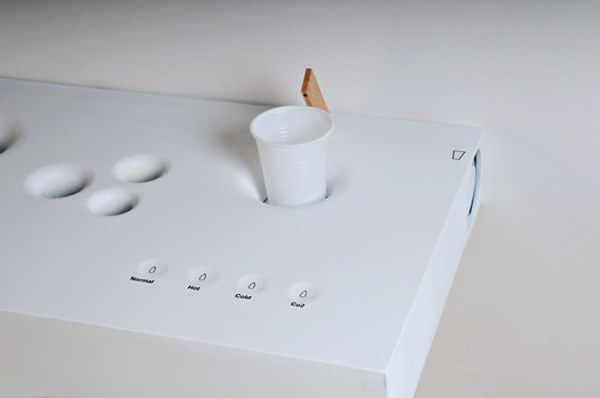
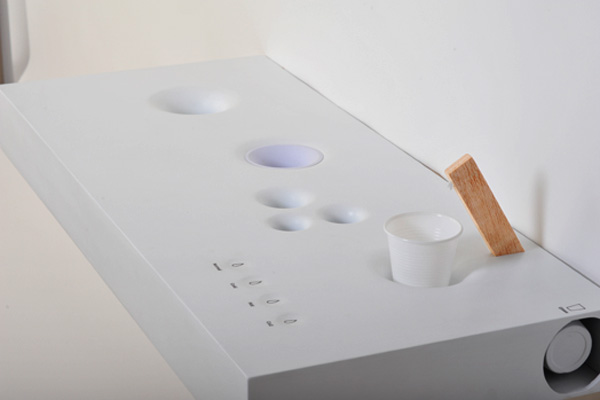
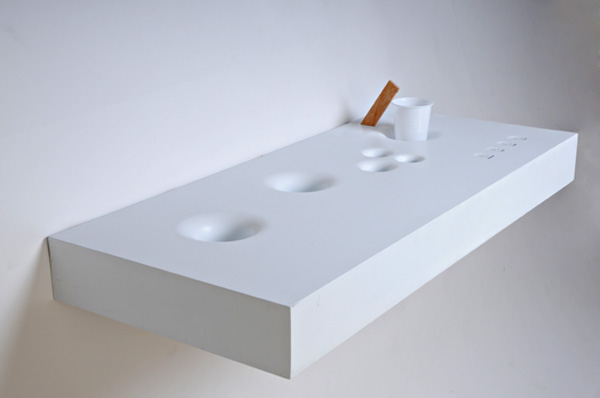
----------
Yanko Design
Timeless Designs - Explore wonderful concepts from around the world!
Yanko Design Store - We are about more than just concepts. See what's hot at the YD Store!
Aston Martin set to launch Toyota IQ-inspired, all electric Cygnet
by: Ecofriend, 2011-05-19 07:28:54 UTC
Dattatreya:

No, please don’t bring James Bond into this, as the Aston Martin we are going to harp about, is not even close to the DB series, or for that matter to any sportscar. Rather it will be an electric cousin to the petite yet luxury city car Cygnet, which in itself is derived from the Toyota IQ.

After receiving criticism from BBC’s Top Gear, Aston Martin still seems adamant about Cygnet’s future - as a vehicle that will satisfy the customer base with an efficient yet luxurious commute in an urban context. And now rather advancing by a green step (not that we are complaining), the company wants to bank on the propitious atmosphere prevalent in the European market for energy efficient vehicles (where many cities are just opening certain sections only to electric and/or hybrid vehicles).

The electric, two-door Cygnet will be based upon Toyota’s IQ, as mentioned earlier. That means its specifications are also expected to be similar, with a sturdy, bantam electric motor and a lithium-ion battery pack occupying the area beneath the floor space. The range will be somewhere around 65 miles per single charge, which seems adequate enough for a zero-emission drive around the city. Though unlike the IQ’s leasing program, Aston Martin will perhaps take the more conventional route in selling the all-electric Cygnet.
Source: MotorTrend


 Kindle Books Outselling All Print Books on Amazon
Kindle Books Outselling All Print Books on Amazon
by: Eco Geek Latest, 2011-05-19 16:34:29 UTC

Amazon announced today that for its Kindle ebooks are now officially outselling all print books, including paperbacks and hardcover editions. For every 100 print books sold, Amazon sells 105 Kindle books, a trend that the company expects to keep increasing.
The new figures do not inlcude the free ebooks, which would push the ratio of ebooks to print ones even further in the ebooks favor. The numbers do include, however, print books that are not available in a Kindle edition.
Kindle ebooks surpassed hardcover sales in July 2010, then paperback sales in December 2010 and now they outsell both combined. Amazon said it has already sold three times as many ebooks so far in 2011 than it did in the same time period of 2010.
A study last year by the Cleantech Group found that a Kindle has a lower carbon footprint than print books once you replace the purchase of 22.5 new books with ebooks. Now that Amazon is selling so many ebooks, it's clear people are reducing their reading-related carbon footprints very quickly.
via Mother Nature Network
Images via Amazon
Guest Post: Fighting Illiteracy With Solar Lights
by: Greentech Media: Headlines, 2011-05-18 19:43:00 UTC
When Pastors Kofi Fosuhene and Osei Darkwa visited the Pangaea network in Goleta two years ago, they did not know their prayers would be answered. Pangaea is a California nonprofit organization that works toward bringing affordable solutions to African countries in need, such as Ghana. It leverages the network of churches and mosques to accelerate the adoption of new technologies that can improve the living conditions of many who are off the electric grid and cannot read.
 More than one billion people in the world do not have access to stable electricity and rely on kerosene, candles or firewood for lighting, all of which are expensive and provide inferior light for reading. Lack of suitable home lighting is directly linked to illiteracy, poverty and health problems. Women in particular are often deprived of schooling and job opportunities.
More than one billion people in the world do not have access to stable electricity and rely on kerosene, candles or firewood for lighting, all of which are expensive and provide inferior light for reading. Lack of suitable home lighting is directly linked to illiteracy, poverty and health problems. Women in particular are often deprived of schooling and job opportunities.
I met with Claude Dorais, President of Unite-to-Light, during my trip to Santa Barbara last week. He recounts that when the pastors asked for a better reading light, some of the church members thought to contact Dr. Bowers, who heads the Institute for Energy Efficiency at UC Santa Barbara. His first reaction was that someone was already making solar flashlights and it was merely a question of volume pricing.
Dr. Bowers looked for a simple, clean, affordable and rechargeable reading light and, to his surprise, he could not find one. So a local team of engineers and students decided to build a better reading light. They picked an energy-efficient LED (100 lumens per watt), selected a robust solar cell (weather resistant), and designed a small integrated circuit, so a single AA battery could power the light.

After going through a few design iterations, the first samples were sent to Ghana and met with great enthusiasm. A simple 8-hour charge during the day can provide 4 hours of reading at night. One mother reported that her children "no longer sneeze black gunk." Using kerosene lighting for three hours a night corresponds to smoking two packs of cigarette a day.
Unite-to-Light was formed and distributed additional lights to Ghana in partnership with Pangaea and the Presbyterian Church. They realized that kerosene lights are quite expensive to run in Africa: $6 represents one month of reading. They decided to sell the clean solar-powered lights for $12. Donations to buy 1,000 lights will turn into 19,000 lights if United-to-Light sells them at 95% of their cost.
The question of selling vs. giving is a critical one. Claude explains that the purpose of selling the lights is not to make a profit, but rather to make a bigger impact and to fight illiteracy. “If you give 1,000 lights, you improve the life of 1,000 families. Now, if you sell 1,000 lights, you can use the funds to start a cycle and improve the lives of many more families.”
 Claude took the example of an orphanage in Kenya, the Flying Kites Leadership Academy. They originally donated lights to their 150 students. Half of them live off-campus and the lights caught the attention of people living across the countryside. It turns out that kerosene is very expensive in Kenya and the orphanage has the opportunity to act as a distributor. A local donor bought 250 lights and the school will use the profits to buy more lights. When there is stable demand, they will able to use the reasonable mark-up to grow their facility and host more children.
Claude took the example of an orphanage in Kenya, the Flying Kites Leadership Academy. They originally donated lights to their 150 students. Half of them live off-campus and the lights caught the attention of people living across the countryside. It turns out that kerosene is very expensive in Kenya and the orphanage has the opportunity to act as a distributor. A local donor bought 250 lights and the school will use the profits to buy more lights. When there is stable demand, they will able to use the reasonable mark-up to grow their facility and host more children.
Unite-to-Light has shipped 10,000 lights to date to Ghana, Uganda and Kenya and has responded to disaster relief requests in Haiti and Japan. They are on schedule to produce 100,000 lights by the end of the year and they have worked with various third-party distributors: churches, non-profits, and local store owners. They have not implemented micro-financing yet but Claude Dorais thinks it will likely come as the project grows.
I challenged Claude by asking if the goal for next year is to ship 1,000,000 lights. “Well, we have more than 50 volunteers involved, including a Nobel Laureate and CFOs of tech companies. We have a lot of busy people and we would not be doing this if we did not think we had a chance to make an impact that could be measured in millions or tens of millions.” One of the principles guiding Unite-to-Light -- access to education -- is dear to the heart of Nobel Laureate Walter Kohn, who wants to see more girls and women have the opportunity to pursue carriers in science.
***
Olivier Jerphagnon is a serial entrepreneur. You can find him at Green Frog From Silicon Valley.
World’s first 100 watt equivalent LED replacement bulb
by: Gizmag Emerging Technology Magazine, 2011-05-18 06:59:05 UTC

Currently the brightest options for those looking to ditch their incandescent light bulbs in favor of the longer life and more energy efficient LED variety are those equivalent to 60 watt incandescent bulbs, such as the
GeoBulb II. Things got a little brighter last month when California-based Switch Lighting announced its 75 watt-equivalent LED bulb and now the company has gone one better with the announcement of the world’s first 100 watt-equivalent LED bulb. ..
Continue Reading
World’s first 100 watt equivalent LED replacement bulb Tags: Energy Efficient,
LED,
LED Light Bulb,
Lighting
Related Articles:


 Trimensional app turns the iPhone into a 3D scanner
Trimensional app turns the iPhone into a 3D scanner
by: Gizmag Emerging Technology Magazine, 2011-05-18 19:28:40 UTC

Grant Schindler, a computer scientist at the Georgia Institute of Technology, has created what is admittedly a pretty cool iPhone 4 app. It’s called Trimensional, and it allows your phone to act as a 3D scanner. While you could use it to obtain a three-dimensional frontal image of pretty much any object, if the product’s website is anything to go by, users’ faces seem to be a particularly popular subject.
..
Continue Reading
Trimensional app turns the iPhone into a 3D scannerTags: 3D,
iPhone,
Scanner
Related Articles:



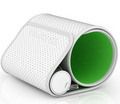

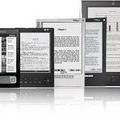

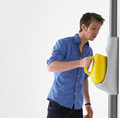


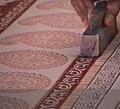


Comments by our Users
Be the first to write a comment for this item.